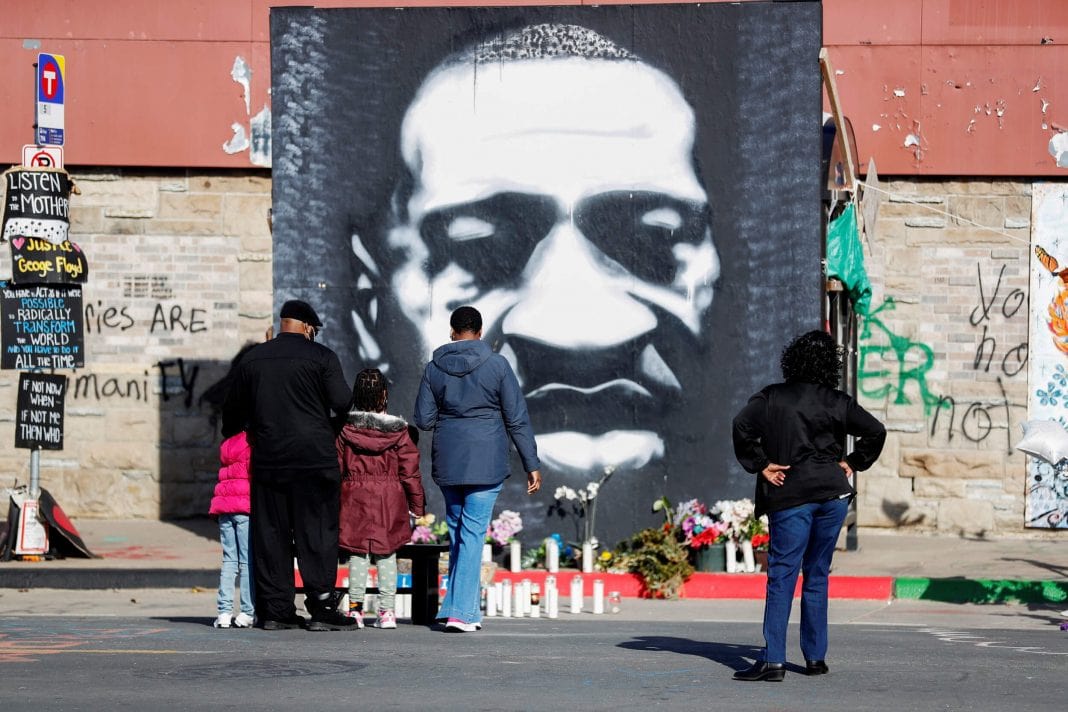By Kenneth Tiven in the US
The team of lawyers, who succeeded in prosecuting the US police officer who killed George Floyd, deserves an A+ rating for the precision of their work. They had a substantial edge because a bystander recorded an unusually long and steady video.
At 9 minutes and 29 seconds, the mobile phone video made it obvious that last year police officers had lied in their written report about the death of a suspect in a misdemeanor involving a possible counterfeit $20 bill in Minneapolis, Minnesota.
It is rare in the US for a policeman to be convicted of mishandling or killing a suspect. Defense lawyers are adept at raising extenuating circumstances sufficient to convince some jurors to opt for acquittal or a hung jury decision.
The spanner in the usual grinding gears of justice began with that video which went globally viral and kicked the #BlackLivesMatter movement into high gear.
Within 24 hours, the police chief fired Derek Chauvin and the three officers who were with him. The case ended this week with Chauvin guilty of two murder charges and a manslaughter charge decided in less than 10 hours by a jury. He is now in solitary confinement awaiting sentencing in about eight weeks for what could be 40 years of prison time.
Americans, in general, breathed a sigh at a verdict that supported exactly what we saw on the video shot by Darnella Frazier, the 17-year-old with a sense of right and wrong. The defense arguments were an alternate reality the jury rejected.
The back-story is fascinating. The State of Minnesota took charge of the case from local authorities and used three teams of lawyers in a well-coordinated effort to make their case as precise and appeals free as it could be. There was none of the flamboyance and grandstanding that has been the hallmark of too many high profile murder cases in America. Think OJ Simpson in 1992.
In this case, Attorney General Keith Ellison, a civil rights lawyer before becoming a Congressman and now Minnesota’s top law enforcement officer, paired two of his prosecutors Matthew Frank and Erin Eldridge with two outside attorneys, Jerry Blackwell and Steve Schleicher, both experienced trial lawyers. Their preparation was meticulous, especially in anticipating and dismantling the defense’s expert witnesses on cross-examination.
They knew the videotape was unambiguous so they emphasized it as an accurate record of what happened. Schleicher saying in closing, “This case is exactly what you thought when you saw it first, when you saw that video. It is exactly that. You can believe your eyes. It’s exactly what you believed. It’s exactly what you saw with your eyes. It’s exactly what you knew.”
The third group, led by Neal Katyal, former acting US solicitor general with extensive appellate and Supreme Court experience, focused on avoiding any procedural shortcomings that would help any appeal by the defendant. “We know in any high-stakes case like this there’s going to be an appeal,” Katyal told Axios website. Aided by seven lawyers, the idea was to keep “one eye to the trial itself, and with the other, how’s it going to look on appeal,” he said. “We needed to understand what people would be thinking about after the trial was over.”
There was yet another element in the prosecution toolkit: a media consulting group was monitoring national and international media coverage. Its job was to compress for the prosecution team any trends they could discern from the coverage as to errors, influencers and the developing public narrative. Ellison said this was “a completely integral and invaluable part of the team, essential to helping us understand the broader conversation around the case” and “the world around us.”
In this case, the prosecution had very limited ability to present relevant evidence it had regarding Chauvin’s record as a cop for nearly 20 years. The prosecution had at least six witnesses ready to talk about Chauvin either choking them or being unnecessarily rough. The fact that the police chief and nine other officials of the police department testified against Chauvin on the use of force issue suggests it was no secret within the department that he was an overly aggressive cop. As we have come to understand, it is extremely rare for one law enforcement person to publicly criticize a fellow officer.
This so called “blue code of silence” explains how Chauvin was the subject of at least 22 complaints or internal investigations during his more than 19 years on the force, only one of which resulted in discipline. These interviews show not only that he may have used excessive force in the past, but also that he had used startlingly similar techniques.
Since the trial started on March 8, there have been four other deaths of people of color by law enforcement. In fact on April 22, the funeral took place for Daunte Wright. The 20 year old shot and killed a week ago in a traffic stop about an expired license just 10 miles from the Chauvin trial in Minneapolis.
The three officers who were with Chauvin last May are scheduled to go on trial in August on charges of ignoring the murder for which Chauvin was found guilty. His conviction cannot be used against the trio, but is a safe bet that at least one of them will consider a plea bargain rather than face a trial.


